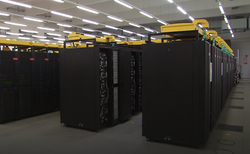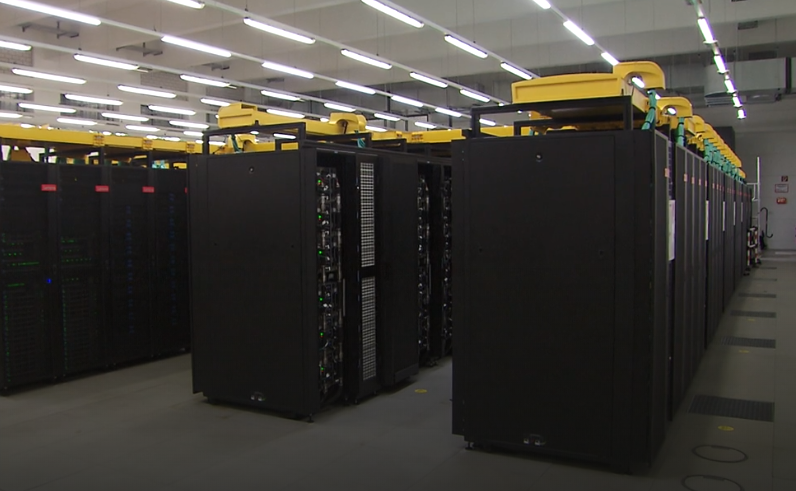
Sept. 27, 2018
By: Michael Feldman
The Leibniz Supercomputing Centre (LRZ) has flipped the switch on the 26.7-petaflop SuperMUC-NG, making it Germany’s highest-performing HPC machine.

SuperMUC-NG. Source: Bayerischer Rundfunk (screen shot)
Representing a four-fold increase in raw computing power at LRZ, the new system is in line to replace the phase one and two SuperMUC machines. Those two systems, which deliver more than three peak petaflops of performance apiece, are currently listed as number 57 and 58, respectively, on the current TOP500 list.
SuperMUC-NG – the NG stands for next generation – represents the third phase of the SuperMUC series, although this latest system won’t be officially complete until 2019. In its current form, it’s comprised of 300,000 Xeon Platinum CPU cores, 700 terabytes of memory and 70 petabytes of disk storage. Like its predecessors, SuperMUC-NG is pretty much a straight-up HPC cluster based on conventional x86 processor technology, albeit at the scale of a leadership-class supercomputer. The 6,500 or so nodes are hooked together with Intel’s Omni-Path fabric.
As we reported in February, SuperMUC-NG was built by Lenovo, using the company’s new dual-socket SD650 server. The SD650 is powered by Intel’s Xeon Scalable processors (“Skylake”) and employs an advanced warm-water cooling system to reduce power costs. Lenovo claims their warm-water design will cut electricity usage by up to 45 percent compared to a conventional air-cooled system.
In keeping with the energy-efficient theme, SuperMUC-NG will be run entirely on renewable energy sources and will reuse the waste heat from the system to warm the surrounding building and for cold generation in adsorption chillers.
“With SuperMUC-NG, we will continue to provide state-of-the-art HPC technology and compute power to foster research and science in Bavaria, Germany, and Europe,” said Prof. Dr. Dieter Kranzlmüller, Director of LRZ.
As one of the supercomputers under the umbrella of the Gauss Centre for Supercomputing (GCS), SuperMUC-NG will be available to researchers and scientists throughout Germany, as well as elsewhere in Europe. It will support applications across all scientific domains – life sciences, astrophysics, meteorology, geophysics, and climatology, to name a few.
With its all-Xeon design, SuperMUC-NG is currently the world’s most powerful system based exclusively on standard x86 processors. And if the supercomputer rankings don’t shift around too much on the upcoming TOP500 list, SuperMUC-NG will end up as a top 10 system in November. The last time Germany had a such as system was June 2016, when HLRS’s Hazel Hen supercomputer captured the number nine position.
